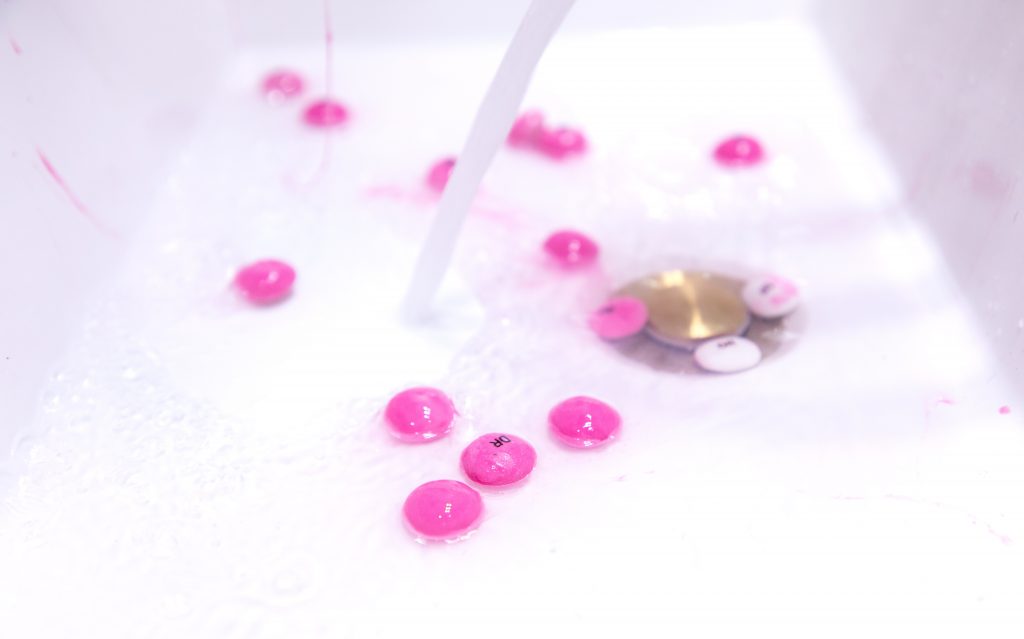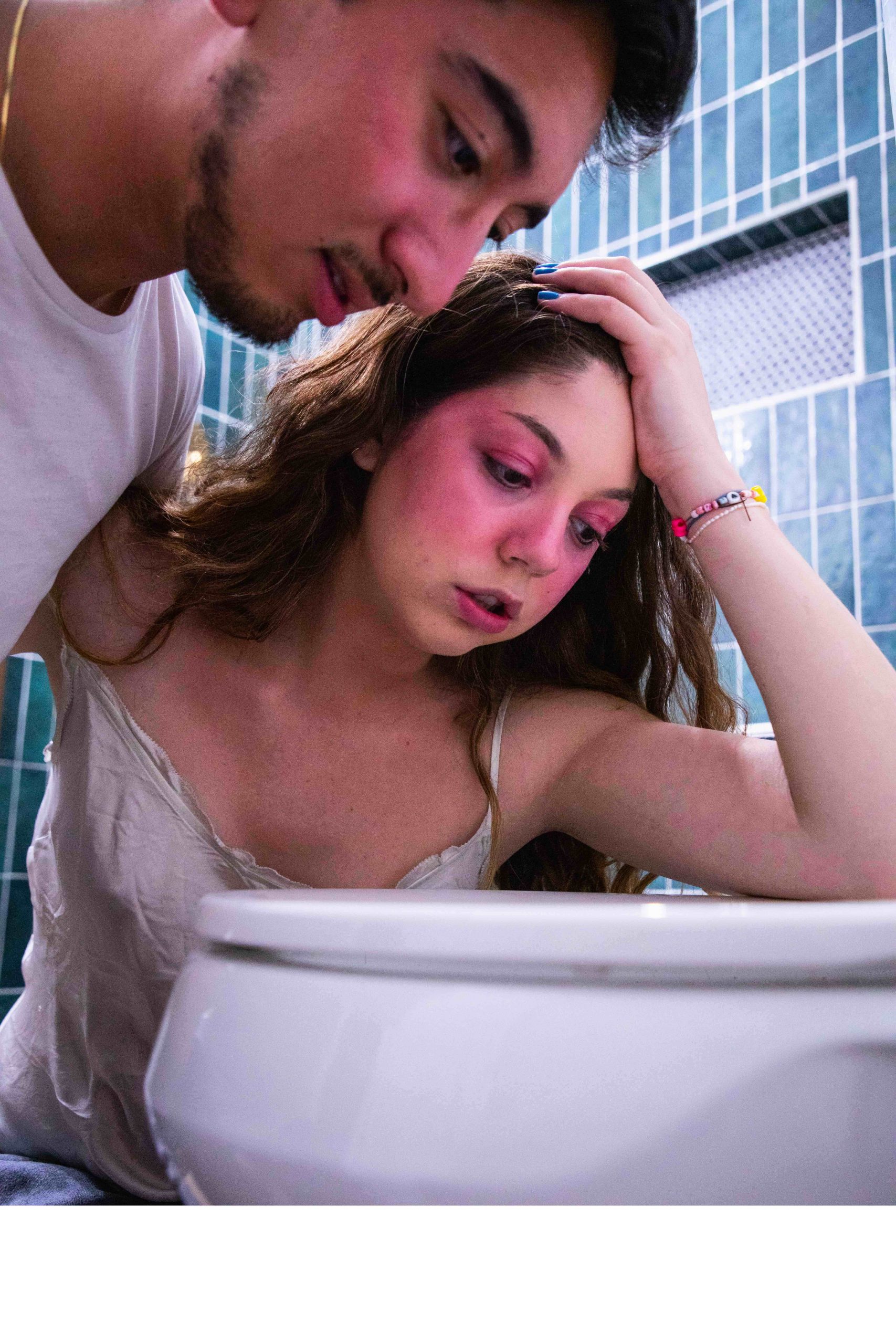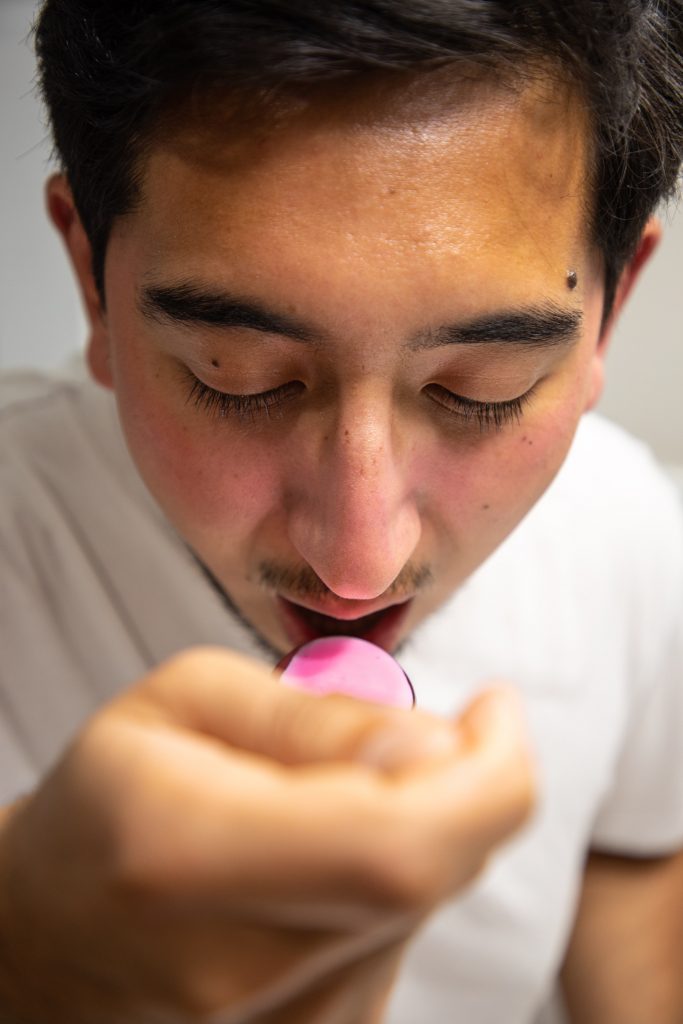I.
“Literature does its best to maintain that its concern is with the mind; that the body is a sheet of plain glass through which the soul looks straight and clear, and, save for one or two passions such as desire or greed, is null, negligible and non-existent. On the contrary, the very opposite is true. All day, all night the body intervenes; blunts or sharpens, colours or discolours, turns to wax in the warmth of June, hardens to tallow in the murk of February.” —Virginia Woolf, On Being Ill
II.
At the moment I was
Birthed I swear I
Choked into this world. I
Did not mean to
Enter this way. Water in my lungs. It was late
Fall. I was a
Girl, they said, because I did
Happy dances inside. Nine months
Imagined. Grand
Jetés, Not
Kicks.
Learned these
Maneuvers in utero. I am
Not what you ordered but I can
Offer you this
Plate you cannot send back. I
Quieted my insides. A
Ruby ceased
Shining. It chipped, lost
Tint. I brought you into this world. Fractures
Under polished
Veneers.
Wild fissures only
X-rays reveal. Would you still rub your belly if
You knew I was tarnished? That my
Zeal would one day run dry?

III.
On sick days in my youth, Grandma prepared large ceramic mugs of hot water and honey. She’d send me to the front porch where the Southern California sun could pour in through my chest, out through my breath.
IV.
I do not mean to romanticize this. It’s not romantic.
V.
My lungs gave in when I was five. I remember an unfamiliar bed with stiff white sheets, laying inches from a thumb-sized vial of my own blood. Neon blared from the television. Everything was vivid. Blurred.
VI.
In the years following this hospitalization, I spent weekends playing “doctor” with my dolls. I’d line them all up, tuck them under blankets, pretend to check their temperatures. I told them they would be all right—but they must lay very still.
VII.
Pepto Bismol was invented in 1901 as a treatment for infants with cholera. In all of its 100+ years, it has been pink, created with artificial colors Red 22 and Red 28. At various points in its manufacturing history, the drug could have undergone a color-switch— mint green, chalk white. Pink stuck. A bubble-gum hue chosen to reduce fear.
VIII.
How has fear dictated the urgency of my love? Why do I only awake to love that is nearly gone? Diminishing?
IX.
Ovid writes in Ars Amatoria, “Long lovers’ vigils thin their bodies; so do care/ and worry born of some great love affair./ To win your heart’s desire, look miserable. That way./ ‘This man’s in love’ all observers will say.” In the age of courtly love, love sickness was thought to be a tangible, diagnosable ailment. Love synonymous with reduction.

X.
Every few years the same film is released to public acclaim— two lovers, one or both of whom is terminally ill. A Walk to Remember. Sweet November. The Fault in Our Stars. 50/50. Me Before You. Love is made more poignant because it is finite. In this exploitation of terminality for heightened emotional experience, we cannot help but reckon with our own mortality. We cannot look away.
XI.
I am trying not to recreate the sick love I’ve experienced, yet I find myself drawn to it cyclically. I feel that I need it, to make art, perhaps, or to complete this circuit of entropy swirling in my chest. I make a choice: I will not fetishize it. I will not let it seep into what I offer.
XII.
As artist Hannah Wilke underwent chemotherapy for her terminal cancer, she crafted a series of memento mori. Sculptures: hair, wax, needlepoint. Invaluable and menacing, sitting at the intersection of two domains. Her words reverberate across lifetimes: “To make art is to take from one’s inner world and make it material, to give it life in the physical realm…to communicate what is otherwise unknowable and save what would otherwise be lost.”
XIII.
Because art has been displaced from this regularized experience we call being human, we have all become very ill. Siloed into the periphery in compartments, as therapy, as commerce. Our decisions are deprived of it. We do not encounter it often enough or fully enough to possibly get well.
XIV.
At my sickest point, by which I mean the point I nearly suspended trust in my biology, I wrote to myself late one night:
Prescription for madness:
Waiting for a sick root
To reveal its sickness
So its pretending stops
Infecting the whole crop.
XV.
“The creature within can only gaze through the pane—smudged or rosy; it cannot separate off from the body like the sheath of a knife or the pod of a pea for a single instant; it must go through the whole unending procession of changes, heat and cold, comfort and discomfort, hunger and satisfaction, health and illness; until there comes the inevitable catastrophe; the body smashes itself to smithereens, and the soul (it is said) escapes.”—Virginia Woolf, On Being Ill

Creative Direction Emily Hanson
Words Haley Joy Harris
Photographs Catherine Herlihy
Featuring Kamy Chong and Julia Herzig
Armour Magazine Season 26 — S/S 2021




